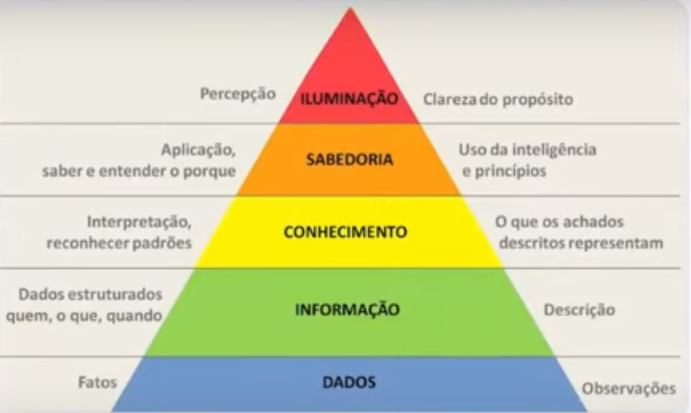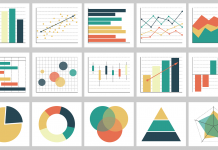
image: heverton anunciacao
You are there on your computer and making a new product or sales report. Then all of a sudden, your director asks you:
— You should assemble as soon as possible the data science area of our company, after all, everyone is saying that this is cool and makes profit!!
And he walks down the hall leaving you with thiscucumberand challenge!
And like any human being on planet Earth you first think of God, then seek new employment, or “give a Google”.
I’ve been working with data in Information Technology since the last century, and to be precise, in 1986… I’m almost a dinosaur…
And if I can help you before you get a new job, I would introduce you to the following strategy to set up a data science area in your company and business.
First of all, I invite you to carefully review the following diagram:

source image: martinsfontes
Não foi fornecido texto alternativo para esta imagem
Now that you have viewed the diagram and, best of all, your boss has given you autonomy to set up the Data Science area, I suggest you follow the following steps:
Step 1) Define a Data Committee and for this team you will have to have a professional with exclusive participation in one of the following areas:sales; marketing; management; logistics; service; training; channels; information technology; Processes. And if in the company framework you have a professional who likes mistheme and statistics and wants to grow in career, invite him too. Already in possession of the names of the collaborators who will be part of this committee, you can already set a date of the first meeting and a biweekly sequence initially and then monthly of this working meeting.
Step 2) At the first meeting, you must explain to all members of the Company Data Committee what the diagram above means:
Data: write on the wall or flipchart all repositories where all company data is stored: SAP ERP; Zoho CRM; Excel Sales Team Spreadsheet; IBM Mainframe 3270; MS Access complaints; Genesys Phone Calls; Book of Visit Company Ordinance; Point Clock Employees; and so on…
Information: Write on the other wall or flipchart all known and available data in the company at the macro level that comes from the data sources. Example: Invoices; Products; Customers; Employees; Suppliers; Accounts payable; Accounts receivable; Blacklist of clients on Serasa; Procon Do Not Disturb List; and so on.. and so on..
Knowledge: And what is the knowledge of this data and Information above? It is up to the Data Committee to go there directly in the data and “experiment” and visualize the data to know what data is this. Which, of course, what can be done with the assistance of the current “owner” of this data source in their respective areas. If the Data Committee does not go to these data sources and know the data, you will still remain at the information level only. It is that there are many people and companies that have data and information, but have no knowledge and obviously will lack digital wisdom. After all, it’s not enough just to read the data, everyone should get some knowledge, whether it’s a book or a data.
Wisdom: After the entire Data Committee you are leading is aware of the data, information and knowledge identified, now yes, a real area of Data Science begins to emerge. This reminds me of the phrase of an old commercial that said “no power without control”! The Data Committee can now experiment to gain “insights” and “wisdom” in possession of all data that is cataloged or will have to be structured to allow for analysis and decision-making as soon as possible. This can be done with the help of consultants (like me kkkk), or even that professional we talked about at the beginning of this article and who likes mathematics, or even hire a few hours from a statistician. This professional in conjunction with the Data Committee will “provoke” and question everything and all information, putting it in check. I would point out some examples: What advantages or disadvantages could our company gain from this X information? What if we cross-reference X with Y and Z? Why does the W-information take so long to become consolidated, so we are taking loss in the Tal area for not being able to update information B? and so on.. and so on.. Therefore, a wise person or a wise company is one who knows how to apply his data intelligently (wisdom).
Lighting: Companies like Google can reach this level of finding “revelation” from the data, thereby creating new products, services or even rewriting the future. When the company reaches this level of being called “enlightened” means that often, the enlightened company does not need to say anything, as it naturally emanats a powerful and indescribable energy. And not so we see Google and others that are entirely information-based?
Step 3) You should make it clear to the members of the Data Committee that there is no knowledge without empiricism and the elements of the diagram. And that the advantages of the company or”digital wisdom” did not arise without practicing this through the experience applied in the company’s own data!
Step 4) Do all of this above and repeat continuously in an agile and itenative way. And never let the company sleep satisfied!

image: canvas.com
ready! You were able to meet your boss’s expectation without having to become a statistician! What matters is that you put together the right data and the right people!
It’s like a prospector who spent 90% of his time “digging” in the mine, but got the wealth only in the last 10% of the time. Make that 10% worth while.



